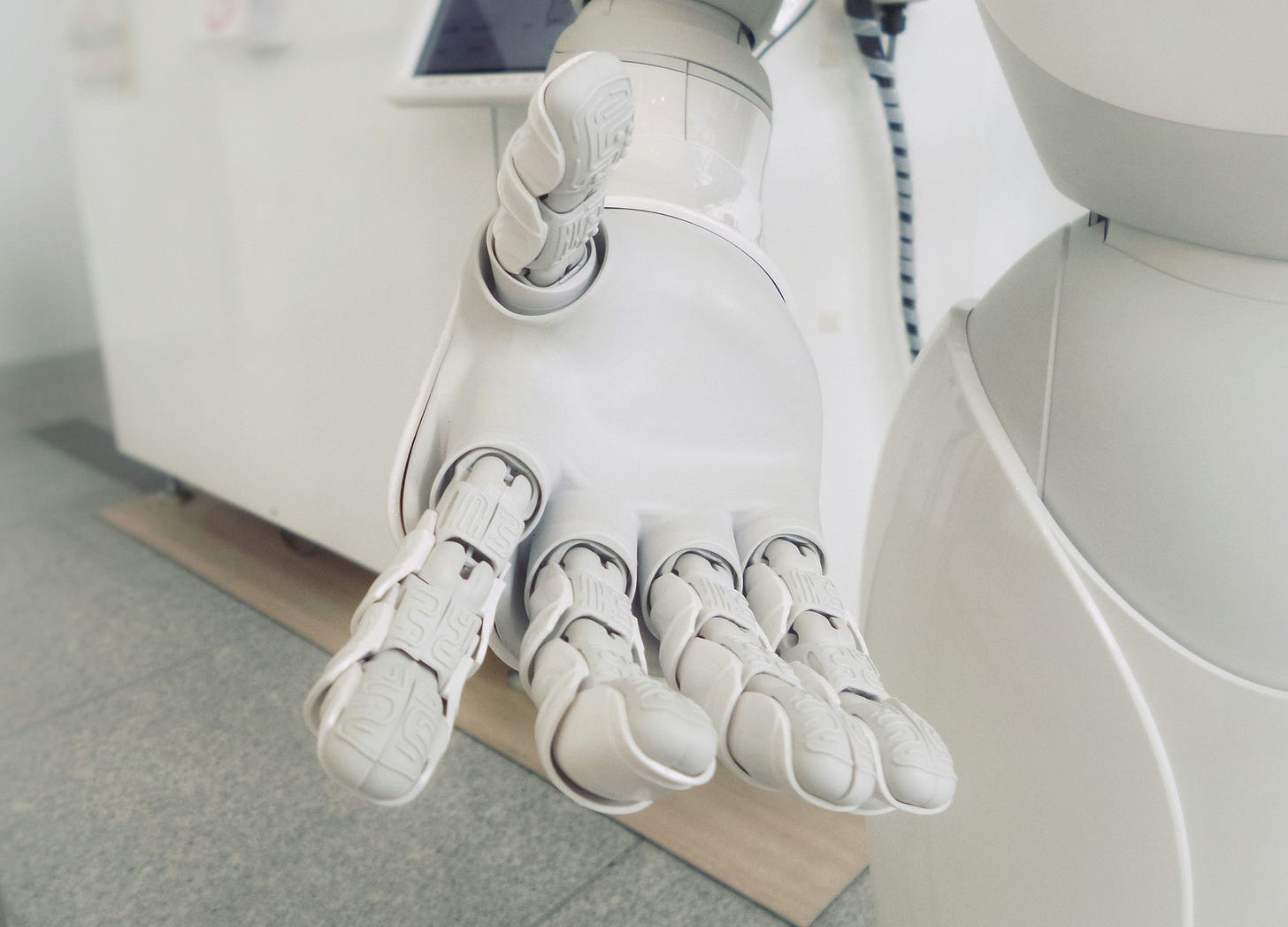Resolving Internal Conflict: How Personal AI Can Help
As the world becomes more turbulent, it can be harder to escape internal conflict and dilemmas. What if there was a faster way?

In real life, just as in any good story, internal conflict shapes who people become. However, as technology becomes more focused toward round-the-clock production, the modern workplace increasingly presents dilemmas that pit people’s roles, values, and desires against each other.
This rising tide of inner conflict isn't surprising. Just as a main character faces challenges that drive character development in literature, people face opposing forces in their daily lives. As remote work blurs the lines between professional and personal spheres, and social media constantly shows alternate paths, many find themselves caught between these competing personal choices.
Understanding what is internal conflict and how to resolve it has therefore become crucial for maintaining both self-image and well-being. Writers have long used writing tips about character development to illustrate how internal conflict drives personal growth—and these same insights can help us understand our own inner struggles.
I’m Yngvi Karlson, Co-Founder of Kin. Born in the Faroe Islands, I’ve spent my career building startups, with two exits along the way, and five years as an active venture capitalist. Now, I’m dedicated to creating Kin, a personal AI people can truly trust.
Follow me on LinkedIn, TikTok and X
To help, I’m going to discuss the following in this article:
Understanding Internal Conflict
Evidence-Based Strategies for Conflict Resolution
Creating an Internal Conflict Action Plan
The Role of Artificial Intelligence in Internal Conflict Resolution
How Kin Supports Internal Conflict Resolution as a Personal AI
Get Started Today with an AI Assistant You Can Trust
In short, we’ll explore the nature of inner turmoil, its impact on our life stories, and evidence-based strategies for finding resolution—including how artificial intelligence like Kin can help navigate these challenging waters.
Understanding Internal Conflict
Internal conflict occurs within a character's mind—whether that character is fictional or, as in our case, ourselves. These conflicts manifest as tension between what we think we should do and what we want to do, creating moral dilemmas that challenge our self-awareness. This differs from external conflict, where we battle external forces like circumstances or other people.
Writers often use various types of internal conflict to drive character arcs. Writing tips from skilled authors remind us that the most compelling stories feature characters whose internal struggles mirror our own experiences with personal growth. In our own character development, we might face similar conflicts.
A classic example is the struggle between career advancement and work-life balance—like a professional weighing whether to take a higher-paying job that requires more time away from loved ones. Here, the character's internal conflict (ambition versus personal values) often intertwines with external forces (workplace demands versus family needs).
The different types of internal conflict we face include:
Moral conflict between competing ethical principles
Self-doubt about our abilities or choices
Cognitive dissonance between beliefs and actions
Personal growth challenges that test our self-image
Examples of internal conflict in professional settings often mirror those found in a good story: the ambitious employee torn between advancement and ethical concerns, or the team leader struggling with difficult decisions about resource allocation. These inner struggles create compelling character arcs in both fiction and real life.
Common Causes of Internal Conflict
Understanding why we face such inner turmoil helps in resolving internal conflicts effectively. Research in psychological literature identifies several common triggers that any main character in their own life story might face:
Value Conflicts: When different personal values compete for priority, creating moral dilemmas. For instance, valuing both honesty and loyalty can create conflict when keeping a friend's secret would mean being dishonest with others.
Decision Paralysis: The tension created when multiple good (or bad) options exist, each with their own advantages and drawbacks. This often occurs in career decisions, relationship choices, or major life changes.
Role Conflicts: When different roles in life demand conflicting behaviors or time commitments. A common example is balancing professional responsibilities with personal relationships or self-care.
Identity Transitions: During periods of personal growth or change, internal conflict often arises between old patterns and new aspirations. This is particularly common during career changes or relationship evolutions.
Signs of Unresolved Internal Conflict
Recognizing internal conflict is the first step toward resolving it. Research from the American Institute of Stress identifies several common indicators that internal conflict may be affecting someone's well-being.
In emotional terms, persistent anxiety, irritability, and mood swings often signal unresolved internal conflict. People might notice themselves feeling constantly unsettled or unsatisfied, even when external circumstances are relatively stable. Many report a sense of being "stuck" or unable to move forward with decisions.
Behaviorally, internal conflict often manifests as procrastination, indecisiveness, or inconsistent actions. Someone might repeatedly change their mind about important decisions, or find themselves unable to stick to resolutions they've made. Sleep disturbances are another common sign, with studies showing that unresolved internal conflict can reduce sleep quality by up to 30%.
Physical manifestations can include tension headaches, digestive issues, and muscle tension—particularly in the neck and shoulders. These symptoms often worsen during periods when the internal conflict feels most pressing.

Evidence-Based Strategies for Conflict Resolution
Research in cognitive psychology and neuroscience has identified several effective approaches to resolving internal conflict and cognitive dissonance. These strategies don't just provide temporary relief—they help build lasting resilience and decision-making confidence.
While seeing a mental health professional can be beneficial during times of extreme internal conflict, sometimes that can be too costly or impractical. It’s also helpful to learn how to work through it individually, so that it can be more efficiently dealt with.
The current science suggests three main approaches:
1. Changing conflicting behavior to align with values
2. Updating beliefs to accommodate necessary behaviors
3. Adding new information that bridges the gap between beliefs and actions
For the first, one powerful approach comes from Acceptance and Commitment Therapy (ACT), which is a type of talking therapy that helps patients recognise and follow their personal values.1 This involves deeply examining what truly matters to someone—beyond surface-level preferences or societal expectations—by asking them to open up and examine all of their thoughts, reactions, and feelings.
For the second, cognitive restructuring can be a helpful exercise. This evidence-based technique involves examining and challenging the thoughts underlying internal conflicts, and proposing plausible alternatives to uncomfortable beliefs. This might mean questioning whether moving for a new job is inherently negative, or whether a difficult conversation at work really will end a relationship—and considering possible and less extreme situations instead.2
For the last, research as a tool is as important as ever. For example, someone in a creative tech role like the games industry might initially have an issue accepting lucrative AI support in their work. However, they may be able to bridge the gap by discovering and supporting ethical and genuinely useful AI products, rather than more environmentally-damaging AI.
Mindfulness approaches like Journaling have also shown remarkable effectiveness, as discussed previously, as they allow people to better understand and recognize sources of conflict.
But, how does that actually get put into practice, and used to help?

Creating an Internal Conflict Action Plan
Moving from understanding to action requires a structured approach. As we discussed in our goal-setting article, breaking down conflict resolution into manageable steps significantly improves outcomes. The key is creating a process that feels both comprehensive and achievable—here’s an example to begin working with:
Define the Conflict: Start by clearly articulating the conflict, including all competing elements. Write down not just the surface-level conflict, but the deeper values and needs at play. For instance, a conflict about taking a new job might actually be about balancing security with growth, or personal fulfilment with family responsibilities.
Develop Evaluation Criteria: Think about what the ideal solution might include, both practically (like salary) and emotionally (like family time). Try to be as clear as possible.
Examine the Assumptions Underlying the Conflict. Often, people have incorrect, unconscious beliefs that make conflicts seem worse than they are. By writing out all of the things that feel true about a dilemma, and tackling them with the methods from the last section, truth can be more easily separated from fiction. For example, the belief that a role with a new company means contact will be lost with old teammates can be challenged by the fact that many people stay friends with ex-colleagues.
Brainstorm Solutions: This section is easier said than done. Still, by combining the previous steps, it’s common that a solution or decision that felt unrealistic due to unconscious assumption now appears more fitting. Either way, the goal isn't to find a perfect solution—research shows that aiming for ‘good enough’ decisions that honor our core values leads to better outcomes than pursuing perfection.3
Even with all of the above support, however, trying to resolve internal conflict independently can be a long and stressful process. This is why more and more advanced support systems are being developed for exactly that reason.

The Role of Artificial Intelligence in Internal Conflict Resolution
Modern technology, particularly artificial intelligence, has introduced new tools for addressing internal conflict effectively.
Though the internet has made knowledge and psychological support more accessible than ever, an AI companion can serve as an unique space for exploring thoughts and feelings without judgment, AI chatbots can respond back with tailor-made responses.
This dynamic can help identify patterns in someone’s decision-making, emotional responses, and behavior that contribute to internal conflict—and an advanced enough personal AI could even suggest therapies, therapists and tactics to deal with these personal triggers.
However, the effectiveness of these tools depends heavily on user trust and privacy—without it, users won’t discuss their internal conflicts in enough detail for the AI to provide accurate support. As we’ve said before, this is why the relationship between users and their personal AI must be built on a foundation of complete transparency and robust privacy protection.
How Kin Supports Internal Conflict Resolution as a Personal AI
Kin represents a new approach to resolving internal conflict, combining the benefits of traditional self-reflection tools with advanced AI capabilities.
Kin’s empathetic and customizable Chat interface and Journal systems gives users an open space to explain and express their internal dilemmas either in conversation or in notes, while still providing web search capabilities and custom responses.
However, Kin’s unique power comes from its advanced Memory, which allows it to remember and reference everything said to it in its Chat or Journal, unlike standard AI chatbots.
This understanding enables Kin to provide increasingly personalized guidance, as the AI assistant can identify patterns from past situations, highlight previous successful resolutions, and guide users through using and personalizing structured reflection processes like the one given above.
This way, resolving internal conflict never has to be an individual job again—and at the very least, Journal notes become much easier to access.
But, we don’t expect you to blindly trust our AI companion with your personal struggles. Kin maintains strict privacy standards, storing and processing information locally on user devices whenever possible, and securely in the cloud wherever possible.
This data can be viewed and deleted at any time, and Kin will never be able to read it, let alone trace it back to an individual user. Supporting people is our business, not their data.
Get Started Today with an AI Assistant You Can Trust
Ready to begin addressing your internal conflicts more effectively? Download Kin here, and start with this message:
"Hi Kin! I've been struggling with internal conflict about [specific situation/decision]. I feel torn between _______ and _______, and it's making me feel _______. I'd like to work through this with you and develop better strategies for handling similar conflicts in the future. Can you help guide me through this process?"
From there, Kin will help explore your conflict, identify patterns, and develop personalized strategies for finding resolution.
Remember, resolving internal conflict is a journey of personal growth—and having the right support, built on trust and understanding, can make all the difference.
Clarke, B. 2024. ‘What Is ACT therapy?’ www.bupa.co.uk. Available at: https://www.bupa.co.uk/newsroom/ourviews/act-therapy [Accessed 02/05/25]
Crum, J. 2021. ‘Understanding Mental Health and Cognitive Restructuring With Ecological Neuroscience.’ Frontiers in Psychiatry, 12, 697095. Available atL https://doi.org/10.3389/fpsyt.2021.697095 [Accessed 02/05/25]
Swider, B.; Harari, D.; Breidenthal, A.P.; Steed, L.B. 2018. ‘The Pros and Cons of Perfectionism, According to Research’. hbr.org. Available at: https://hbr.org/2018/12/the-pros-and-cons-of-perfectionism-according-to-research [Accessed 05/02/25]







